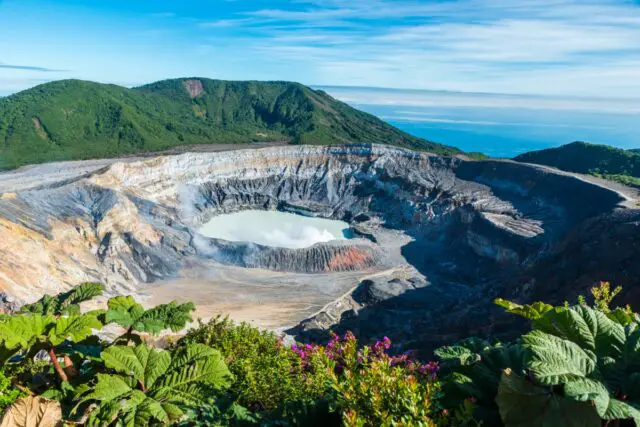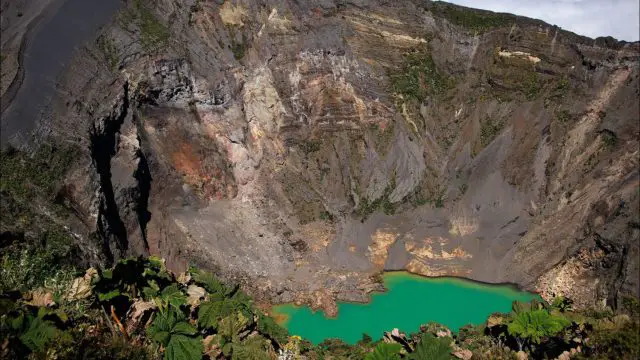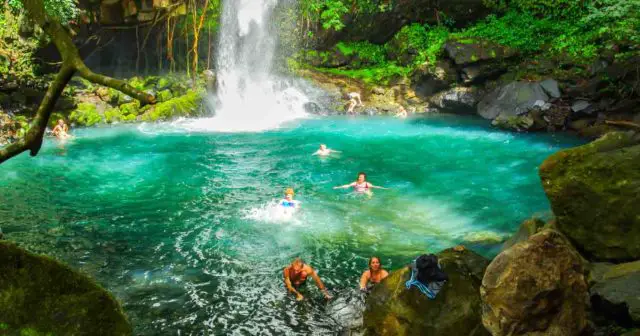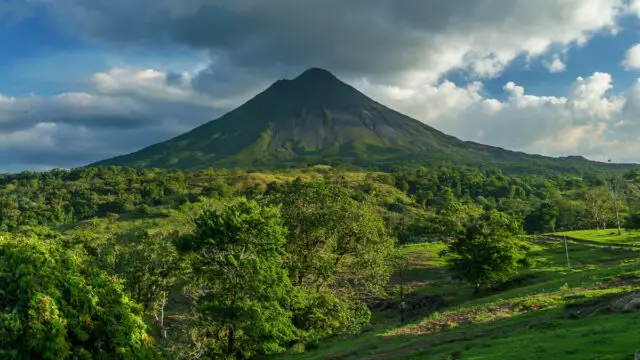I want to introduce you to the 6 volcanoes that you can visit in Costa Rica without any problem. It is really impressive to have the possibility of appreciating a colossus, the vegetation, the characteristic smell of sulfur, the climate and its landscape is something that not all countries in the world have available and that many do not appreciate… What is more, they do not even know about it!
Costa Rica is a privileged country due to its geographical location. Its small territory offers beaches, mountains, cloudy, humid and tropical forests, waterfalls, as well as magnificent volcanoes. Some of them can be visited practically until you appreciate their crater and others offer slightly more discreet landscapes.
Póas Volcano National Park- The Poás National Park is the protected wildlife area that receives the largest influx of visitors in the entire country. It has as an attraction its great natural wealth. Its main crater is a spectacle, complemented by the great prevailing biodiversity.

It is located on the Central Volcanic Mountain Range, 37 kilometers north of the city of Alajuela and 10 kilometers from the community of Poasito, Poás canton, Alajuela province. Due to its proximity to San José, it takes approximately 1 hour to get there. Its constant eruptions change its geography and landscape very often. This place will allow you to visit its attractions, through a network of trails, in a cold climate tempered especially by a light drizzle that prevails most of the year.
Irazú Volcano National Park- Easily accessible and close to the city, it has 5 craters and impressive views. The park protects the colossus of Irazú, an active volcano of 3,432 meters of altitude; in fact, it is the highest in Costa Rica, which has a long history of eruptions and eruptive cycles.

Observing the craters of the volcano is the main objective of those who visit this National Park, located 31 kilometers from Cartago. With a mountain environment, low vegetation and a very humid and cold climate, this site is foggy most of the time. On clear days, you can see from its top both the Pacific and Atlantic oceans, a large part of the national territory and, with a telescope, even Lake Nicaragua.
The origin of its name is due to an indigenous town, which existed on the slopes of the volcano called Iztarú, a word that for them meant hill of tremor and thunder. However, over the years, as a result of verbal communication, his name was changed to Irazú.
Rincón de la Vieja National Park- The impressive Rincón de la Vieja Volcano and its sleeping sister, the Santa María Volcano, form the center of the fantastic Rincón de la Vieja National Park, part of the Guanacaste Conservation Area, declared a World Heritage Site by the UNESCO. Located 25 kilometers northeast of Liberia in Guanacaste, the park has 14,090 hectares, divided into 2 sectors: Las Pailas and Santa María.

Emanations of boiling mud, boiling water, you will be able to witness all this volcanic activity, in addition, you will be able to visit a dry forest, a humid one, a very humid one and a cloudy one in just 2 hours. At 1,916 meters high and 15 kilometers wide, this giant is known as the “Colossus of Guanacaste”. This immense 600,000-year-old geological wonder has at least 9 volcanic craters and some 32 rivers flow from its sides.
Rincón de la Vieja is home to a wide variety of tropical forests, including cloud and montane ecosystems. Exotic and rare flora and fauna find refuge here, including kinkajous, pumas, a variety of monkeys, sloths, tapirs, and jaguars.
Miravalles National Park- 15 kilometers from Bagaces, to the north, and from the undulating terrain of volcanic origin, white in color, the Miravalles is an extinct volcano in its cone, which is covered with jungles, but still maintains activity of batideros, which are commonly known as “burners”.
It is a producer of gases that are used to produce geothermal energy; In addition, it is the highest volcano in the Guanacaste mountain range. In this area, there are several thermal pool centers and you can visit springs where volcanic mud rises to the surface. In a one-day visit, there are usually walks, horseback rides, hot springs, and volcanic clay baths. The provision of unique habitats for felines in danger of extinction, such as ocelots and jaguars, are essential in this sector.
Tenorio Volcano National Park- Located in the Guanacaste Volcanic Mountain Range, this park is home to a rainforest that protects flora and fauna species of regional importance. Within the area, the Tenorio Volcano, with its 4 cones, offers natural panoramic views that allow you to appreciate the Pacific and Caribbean plains.
During a walk through the park, travelers will encounter a wide variety of flora and fauna, including pumas, tapirs, howler monkeys, squirrels, bromeliads, palm trees, beautiful ferns, and much more. By the way, this park is considered one of the best kept secrets in Costa Rica, as well as one of the best places for hikers.
Besides the river, the Tenorio volcano is the main attraction of this park, which should not be a big surprise. It reaches a height of 6,286 feet and features a nearly perfect symmetrical cinder cone. A river of crystalline waters that is dyed turquoise, is a natural spectacle that you can only witness in the place known as “El Teñidero”.
While it is true that there are a variety of legends and myths in Costa Rica, this river is no exception. Legend has it that the gods, while giving color to the skies, soaked their brushes in the waters of this popular river.
Arenal Volcano National Park- It is located in the northwestern region of Costa Rica, between the foothills of the Cordillera de Tilarán and the Plains of San Carlos, 15 kilometers from Fortuna. It is one of the most visited destinations in the North Zone, it has several trails: Heliconias, Coladas, Toucans and Miradores, which allow you to observe a large part of the park’s flora and fauna, as well as remains of lava flows.

When you visit the Arenal Volcano National Park, you can hike short trails of 2 to 3.4 kilometers, through secondary forests to fields of old hardened lava and viewpoints with spectacular panoramic views of Arenal Volcano.
In addition, it provides 70% of the water contained in the Arenal Reservoir Basin, the main source of Hydroelectric Power in the country. Park rangers monitor volcanic activity, and will not hesitate to close trails or sectors of the park if there is any risk to visitors and the nearby population.
Despite having other volcanoes in the country, this group of 6 volcanoes are the ones you can visit in Costa Rica; they are also the best known or the most popular. Each one offers a different landscape, some with more vegetation and others with the typical environment of a volcano. Without a doubt, they will surprise you and make you completely fall in love with the beauties of Costa Rica!

